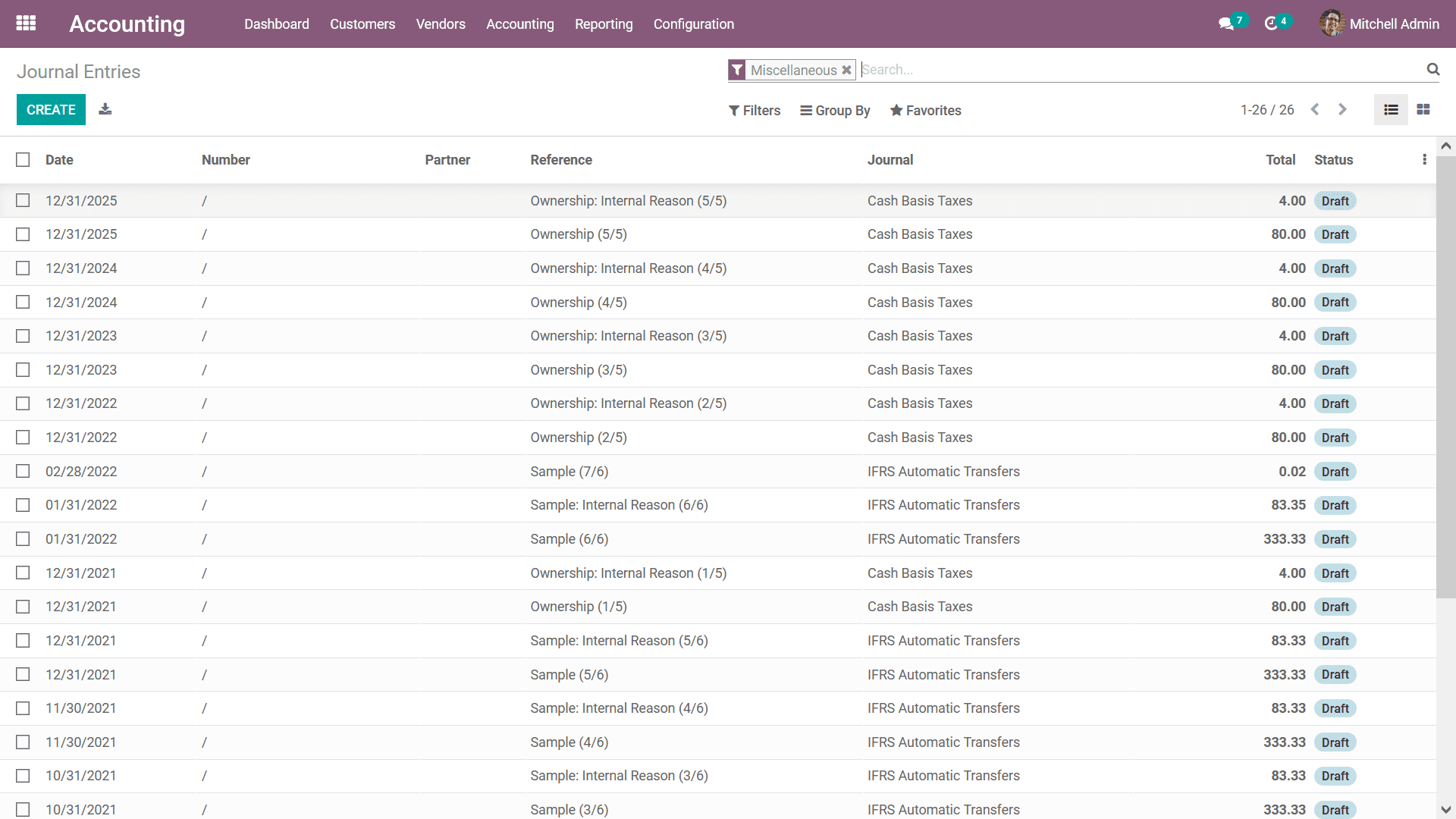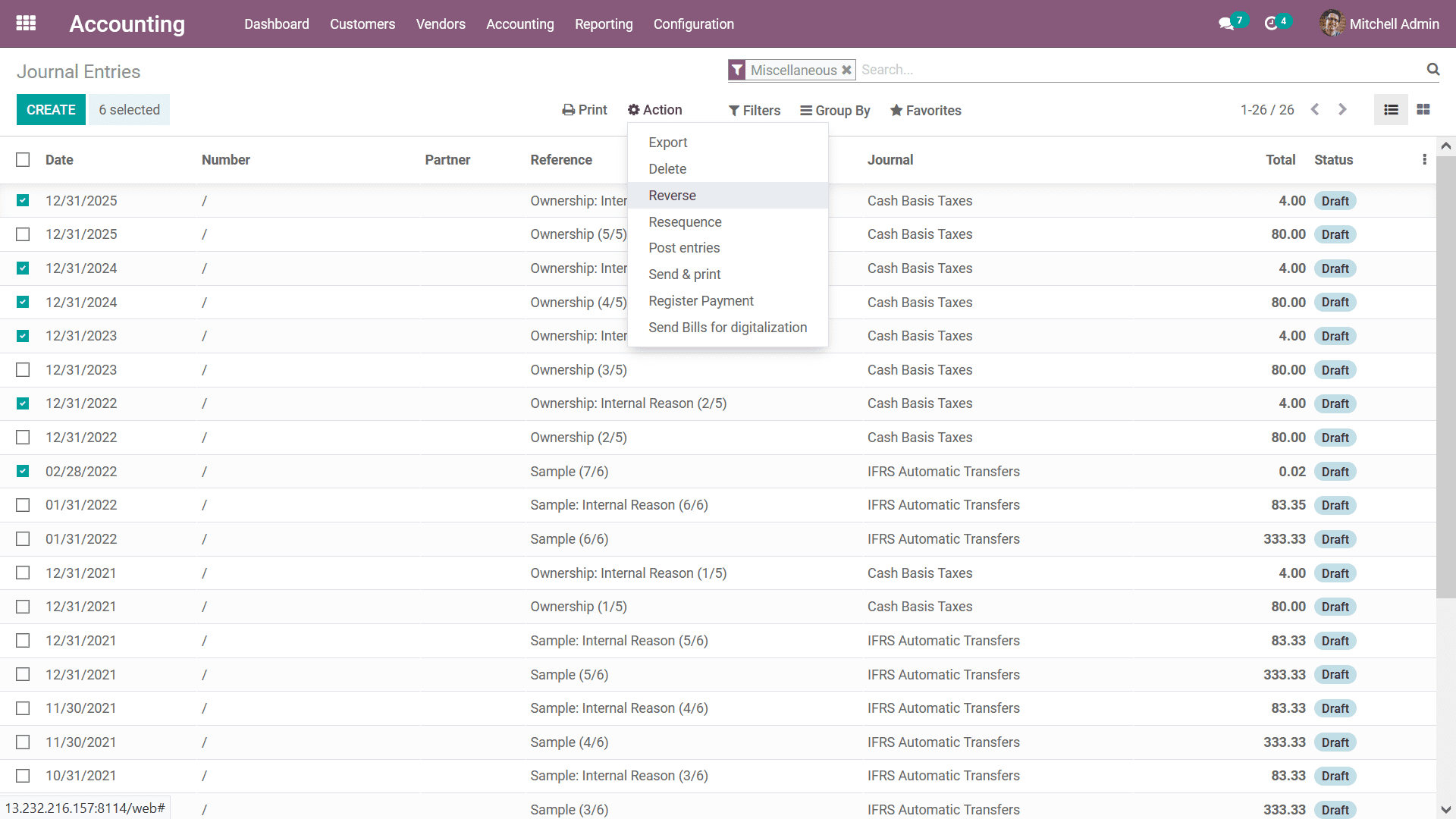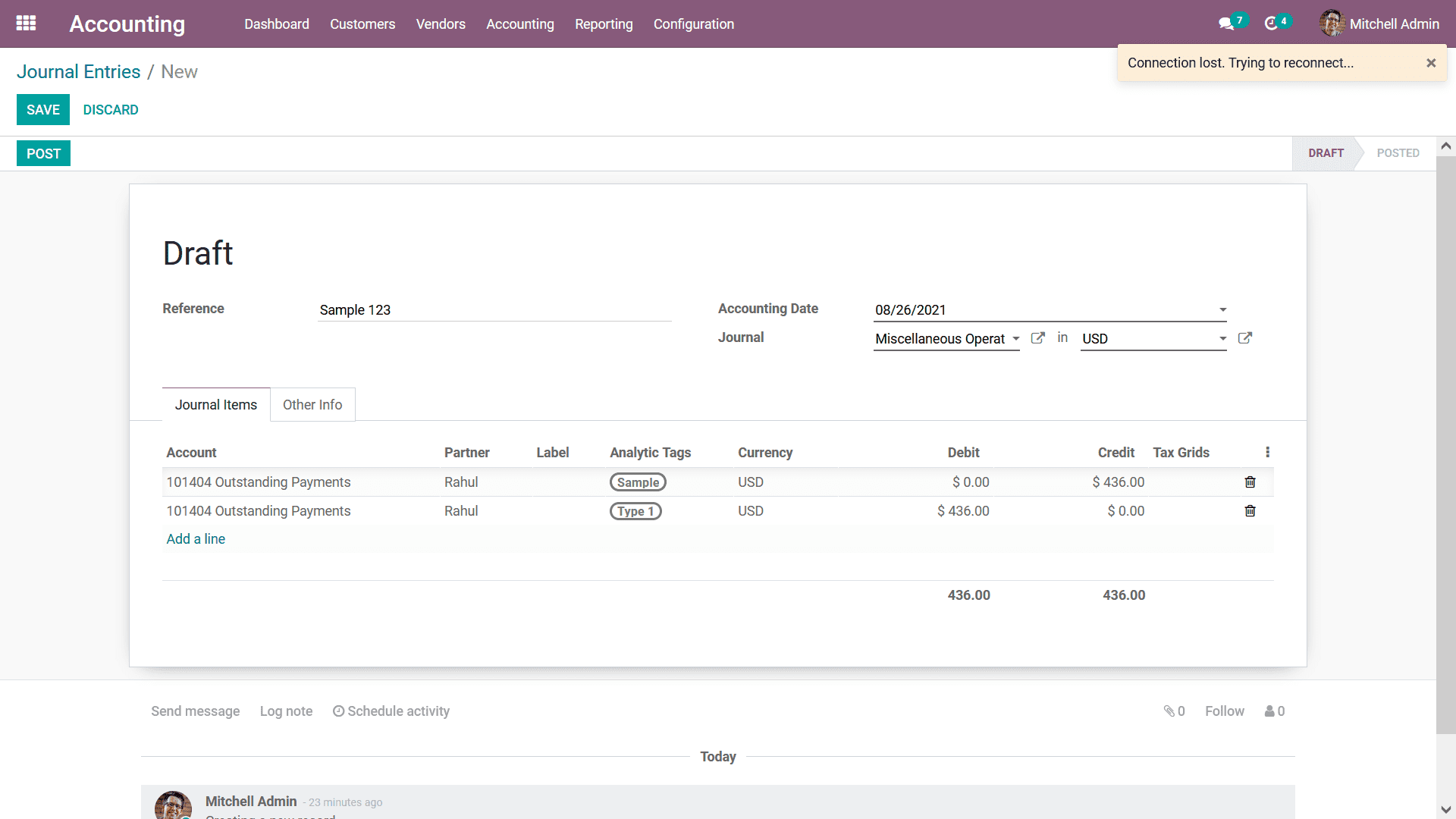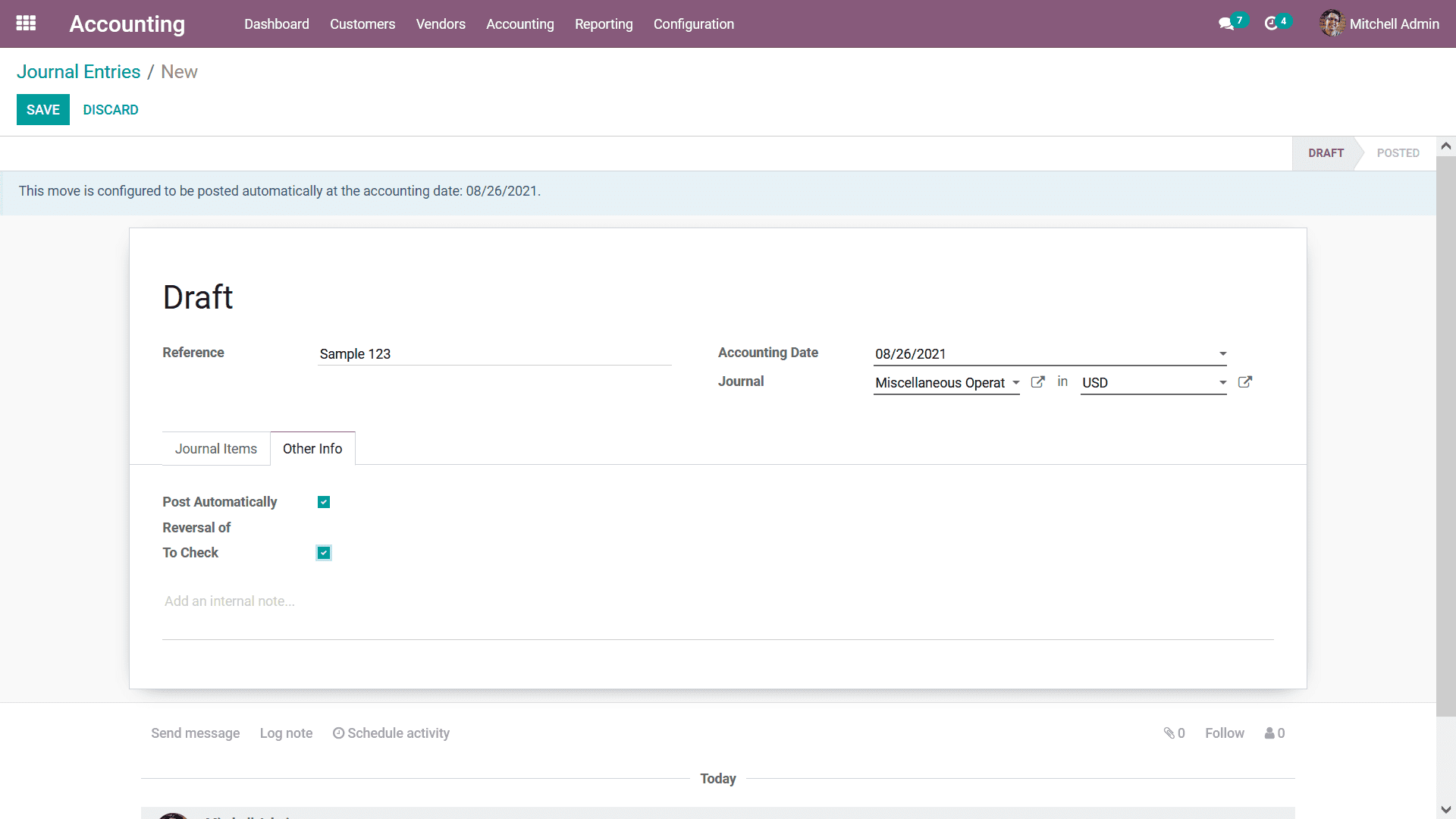Other Miscellaneous Entities Management
The Miscellaneous entities management will be useful in defining the noon important
Journal of operations which have been defined in regards to the financial management
operations of the company. As most of the aspect of the Accounting operations with
the Odoo platform has been classified into dedicated menus of operation with the
dedicated Miscellaneous entities management tool you will be able to manse the non-classified
entries. Under the Other Miscellaneous entities management tab of the Odoo Accounting
module, there is only one distinctive menu where the complete Journal Entries can
be defined. Let now look into the menu operations in detail.
Journal Entries
The Journal Entries menu will help you to look into the aspects of the complete
operations of the entries defined in regards to the company operations. Here all
the Journal Entries irrespective of their classifications will be listed out. Once
you enter into the menu the Miscellaneous filtration will be done as the main aspect
of their menu is the management of the Miscellaneous Journal Entries which have
been defined. There is also Filter as well as Group by tools that are available
which will help you to sort out the required Journal Entries which are being defined.
The Filtering and Group by operations can be run with the help of the available
default tools as well as the custom ones which can be defined.

Once you select the respective entries that have been defined by using the Tick
box options available concerning each of the Journal Entries being defined by you
will be depicted with an action menu as shown in the following image. Here, you
can make use of the options such as the Export, Delete, Reverse, Resequence, Post
Entries, Send & Print, Register Payment, and Send bills for digitalization. These
options will help with the management as well as configuration aspects in regards
to the Journal Entries which have been selected.

You also have the provision to create new Journal Entries by selecting the Create
option that is available and you will be depicted with the menu as depicted in the
following screenshot. Here the Reference as well as the Accounting Date and the
Journal along with the Currency for the respective Journal Entry should be defined
by either selecting them from the drop-down menu or defining it. Further under the
Journal Items, you can define the entries by selecting the Add an available line
option. Here you need to define the Account, Partner, label, Analytical Tag if any,
Currency, Debit or Credit amount along with the Tax Grids of operation for the respective
Journal Entry. You will also have the provision to delete any of the Journal Items
by selecting the available delete option. Furthermore, the total of the debit, as
well as the Credit amount, will be depicted at the end and debit should be equal
to credit as per the double-entry bookkeeping system. Then only the journal entry
can be posted.

In addition, under the Other Info tab that is available, you can enable the Post
Automatically as well as the Reversal of, To Check options, which will enable the
operations of the respective functionalities in the Journal Entry which is being
defined.

Furthermore, to Reconcile the Journal Entries there will be a smart button available
in the respective Journal Entry that has been saved. This option will take you to
the menu where all the Journal Items in regards to the Journal Entry will be defined.
Here you can select the checkbox options and will be depicted with the Reconcile
option in the menu as shown in the following screenshot. There is also an Actions
menu available which can be used to perform various actions on the entries just
as done in the Journal Entries menu of the Odoo accounting module.

In conclusion, the Accounting management tools in the Odoo Accounting module will
help you to perform the various aspects of the Finance management operations with
respect to any aspects of the company to be run and defined with ease. Furthermore,
with advanced controlling tools are available in the Accounting management tools.
In the next chapter, we will be focusing on the reporting aspects of the Odoo Accounting
module.